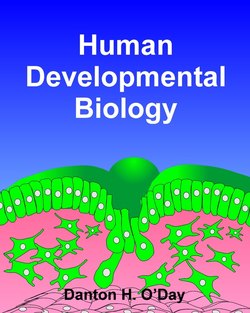Читать книгу Human Developmental Biology - Danton Inc. O'Day - Страница 10
Teratomas
ОглавлениеIn spite of all the controls that exist to ensure that PGCs successfully find their way to the genital ridges, some cells do get “lost” in non-gonadal sites. When they do, this can have serious consequences to the embryo and the individual. Lost PGCs can develop into teratomas. Teratomas are cancerous tissue masses containing a disorganized array of various differentiated cells. In fact, teratomas look like tiny disorganized embryos. As the progenitors of sperm and eggs and because they are a type of stem cell, PGCs have the potential to form many if not all cell types of the human body. Thus, teratomas can contain hair, skin, cartilage, teeth and nerves, as well as many other cell types. As a result of their "totipotent" (ability to differentiate into any cell type) nature, when they get lost and receive the wrong information from surrounding tissues, PGCs begin to differentiate into diverse cell types. Lacking the proper signals for development, they show abnormal tissue organization.
The disorganized state of the teratoma is believed to be a result of "lost" PGCs ending up in embryonic locales where they fail to get the proper embryonic signals for development. As is detailed later in this book, these signals include diffusible signaling molecules and hormones as well as specific cell-cell adhesion molecules. Since the PGCs are totipotent—they have the ability to differentiate into all of the cells of the human body—they can differentiate into many different cell types. As mentioned above, their organization is haphazard because they don't get the proper information to organize into a normal embryonic pattern. The "totipotent" nature of primordial germ cells and their ability to function properly has been shown directly by transplantation experiments. When cells from teratomas (from one genetic strain) are inserted into the inner cell mass of normal mouse embryos (from another genetic strain), mouse teratoma cells contribute normally to development. Instead of a mouse full of malignant teratomas, a normal healthy mouse is formed. Genetic analyses verified that the cells of the teratoma were present in the normal tissues. This elegant experiment verifies the totipotency of these cells and their ability to develop appropriately given the right developmental signals. While PGCs are totipotent, it is likely that most stem cells are pluripotent (i.e., can form a large number of different cell types but not all of those found in the human body. This is because such stem cells (e.g., from blood forming tissues, skin, etc.) have already embarked on a developmental pathway that limits their fate.
